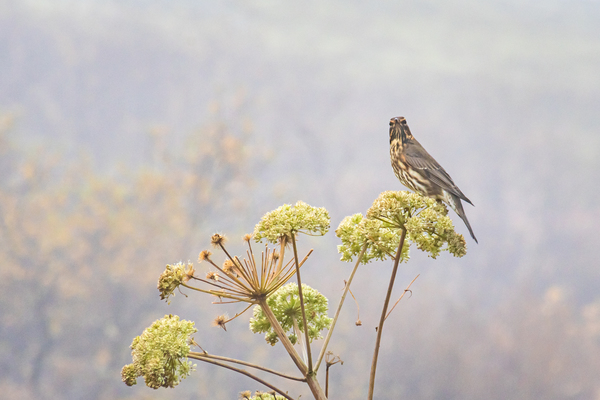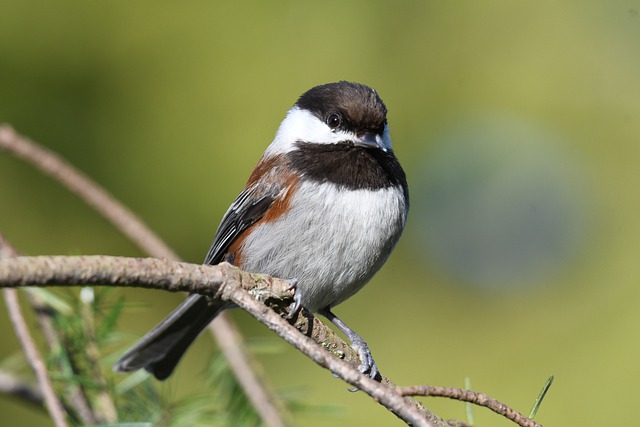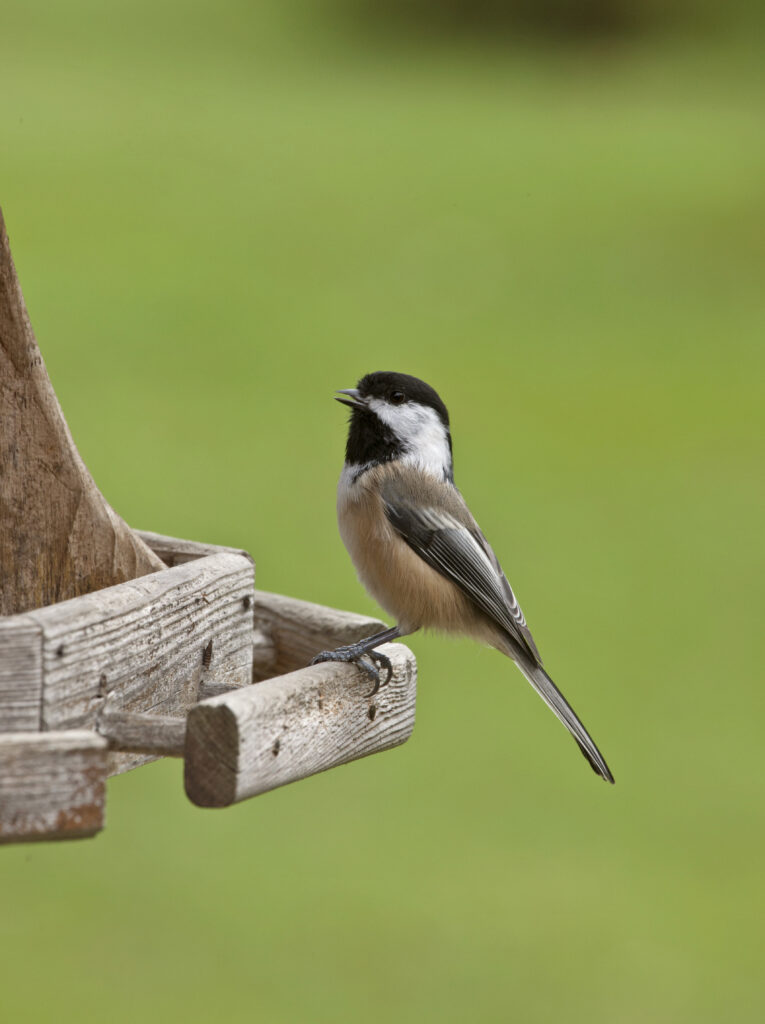Did you know that California is home to more than just one type of chickadee?
From the charismatic Black-capped Chickadee to the elusive Mountain Chickadee, these little birds are known for their distinctive calls and charming personalities.
In this article, we’ll explore the three different species of chickadees that call California their home and discover what makes each one unique.
| Image | Name |
|---|---|
 | Mountains Chickadee |
 | Chestnut-backed Chickadee |
 | Black-capped Chickadee |
Types of Chickadees in California
1. Mountains Chickadee

Mountain Chickadees may be seen throughout the year across California, but from June through August, more people report seeing them on their checklists.
The state’s summertime checklists have them at a rate of 6%, whereas the wintertime checklists only include them at 2%.
Mountain Chickadees are very little birds that have black and white markings on their heads.
Their bodies are grey overall, with a deeper grey on the back and a lighter grey underside.
Mountain Chickadees spend their whole lives in the western highlands of the United States.
Although they do not migrate, it is possible for them to descend the mountains and spend the winter at lower elevations.
Mountain Chickadees may be found in evergreen woods, particularly those that include pine and other coniferous trees.
They consume a variety of foods, including insects and spiders, nuts, and seeds, and they frequently visit bird feeders in backyards.
Mountain Chickadees have a habit of storing food up for later use, which contributes to their overall food supply.
Mountain Chickadees often construct their nests in the cavities formerly occupied by woodpeckers and nuthatches.
The female will line the hole using fur, and then when she goes, they will even protect her eggs with the fur.
They may lay a maximum of nine eggs, each of which takes approximately 2 weeks to hatch and another 3 weeks for the kids to leave their nest once they have been there.
Putting up nesting boxes within your backyard is an excellent way to entice Mountain Chickadees.
Once they are there, they will frequent most sorts of feeders, especially those containing black oil sunflower seeds, mealworms, nyjer, suet, and peanut butter.
It is likely that the security provided by their ancient woodpecker nests, plus the fact that the female hides the eggs when she departs, cause the eggs of Mountain Chickadees to be incubated for around fifty percent more time than the eggs of other species of chickadees.
2. Chestnut-backed Chickadee

The Chestnut-backed Chickadee is a bird that lives across California throughout the year and is most often seen around the coast.
In spite of the fact that they do not migrate, bird watchers in the state have included them on 14% of their summertime checklists and 12% of their winter season checklists.
The chestnut-backed Chickadee is a little bird that can be identified by its black crown and neck as well as its white cheeks.
Their backs and wings are a deep chocolate color, while their wings and abdomen are greys.
In the state of California, the sides of their bodies are grey rather than brown.
There are flocks of chestnut-backed chickadees that reside in the moist evergreen woods along the Pacific Coast.
These chickadees are frequent visitors to the bird feeders in backyards.
Typically, conifer woods are the best places to look for Chestnut-backed Chickadees.
They get the majority of their nutrition from seeds, berries, and fruit, but their diet also includes a variety of insects, such as spiders, caterpillars, aphids, and wasps.
Nests of chestnut-backed chickadees are typically cavities in rotting wood that were built by the birds themself or by using existing woodpecker nests.
Nests of other species of chickadees are sometimes used as well.
Moss and twigs are used to line the inside of the nest, and softer materials like hair and grasses are put on top.
They may lay up to 12 eggs, and it takes approximately two weeks for the eggs to develop and almost 3 weeks for the kids to leave their nest.
Feeders such as platform feeders, tube feeders, or suet cages filled with peanuts, suet, black-oil sunflower seeds, mealworms, or nyjer can entice chestnut-backed chickadees to visit your garden. Additionally, they will make use of nesting boxes.
3. Black-capped Chickadee

Although they are not extremely frequent across California, Black-capped Chickadees may be seen throughout the year in the northern part of the state, particularly in the month of September.
Chickadees with black caps are adorable birds that have large, spherical heads in comparison to their little bodies.
These birds will gladly dine at whatever feeders you have in your garden and inspect anything, even you.
They possess blackheads, beaks, and throats, but their cheeks and backs are white, and their tails and wings are grey.
Their abdomen is noticeably less heavy. They resemble Carolina Chickadees in appearance quite a bit.
There is no evidence that black-capped chickadees migrate, and they are resident across the northern part of both the United States and Canada.
Chickadees with black caps are common in parks, open woodlands, and forests all throughout the world.
Spiders, seeds, berries, suet, and insects are some of the foods that make up their diet.
Black-capped Chickadee’s nests are often found in abandoned woodpecker cavities; nevertheless, these birds have been seen to create their holes in dead branches.
Both sexes will participate in the construction of the nest; however, it is the female who will be responsible for lining it with moss and any other softer things, such as fur.
They are capable of laying a huge clutch of approximately thirteen eggs, during which time it takes around 2 weeks for the eggs to hatch and another 2 weeks for the kids to leave their nest.
You may entice Black-capped Chickadees to visit your garden by providing them with sunflower seeds, suet, peanut butter, or peanuts.
They are among the first birds to typically locate new feeders and will even eat from a human hand if you offer it to them.
They can also utilize nesting boxes if you provide them with sufficient wood shavings to line the inside of the box.
The brains of black-capped chickadees are remarkable because every year, they allow some of their brain neurons to die so that they may get rid of knowledge that they no longer need and update it with fresh neurons and memory.
Check out this article on Chickadees in Florida.
Conclusion
In conclusion, California is fortunate to have three distinct species of chickadees that add to the state’s rich bird life.
Each species has its own unique characteristics, from its distinctive calls to its different preferred habitats.
Whether you’re a seasoned birder or just starting to appreciate the beauty of these little birds, taking the time to learn about the different types of chickadees in California will surely enhance your enjoyment of the great outdoors.
So next time you hear a chickadee’s call, take a closer look and see if you can identify which species you’re hearing.
FAQ
What are the three types of chickadees in California?
The three types of chickadees in California are the Black-capped Chickadee, Mountain Chickadee, and Chestnut-backed Chickadee.
How can I differentiate between the three types of chickadees in California?
You can differentiate between the three types of chickadees in California by observing their physical appearance, calls, and preferred habitats. The Black-capped Chickadee has a black cap and white cheeks, while the Mountain Chickadee has a gray head and breast. The Chestnut-backed Chickadee has a distinctive chestnut-brown back and white belly.
Where can I see the different types of chickadees in California?
You can see the different types of chickadees in California in various habitats, from urban parks to mountain forests. The Black-capped Chickadee is found in forests, parks, and gardens throughout the state, while the Mountain Chickadee is found in high-elevation forests. The Chestnut-backed Chickadee is commonly seen in wooded areas along the coast.
What is the best time of year to see chickadees in California?
Chickadees are year-round residents in California, but they are most active in the winter when they form flocks and are more likely to come to bird feeders.
Are chickadees protected in California?
Yes, chickadees are protected in California under the Migratory Bird Treaty Act. It is illegal to hunt, capture, or kill them without a special permit.
Last Updated on June 29, 2023 by Lily Aldrin
